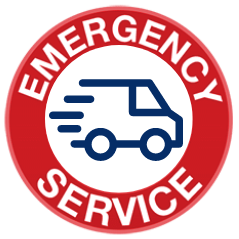The Value of Clean Air
 Indoor air quality plays an important role in your family’s health. Air conditioning, heating and HVAC systems are built to pull air into the units and force it out into various rooms through your home’s air ducts. A lot can happen with that pocket of air as it makes its way around your home day in and day out. As we develop more sophisticated heating and cooling systems, the more we are able to control the quality of indoor air we are breathing 24 hours, 7 days a week.
Indoor air quality plays an important role in your family’s health. Air conditioning, heating and HVAC systems are built to pull air into the units and force it out into various rooms through your home’s air ducts. A lot can happen with that pocket of air as it makes its way around your home day in and day out. As we develop more sophisticated heating and cooling systems, the more we are able to control the quality of indoor air we are breathing 24 hours, 7 days a week.
The Benefit to At-Risk Populations
People with allergies, asthma, or respiratory issues especially children or seniors need to pay special attention to the level of indoor air quality they are experiencing with their current HVAC system. The chemicals used to clean our homes, mold in the walls or ceilings, dust, hair, and all other elements of airborne pollutants are present in our daily air intake. How much indoor air pollutants can we tolerate before it begins to impact our health is dependent on the individual and the level of contaminants found in the air. Mild symptoms of indoor air pollution may show up as headaches, fatigue, itching and other skin rashes. In all cases, your home’s indoor air quality warrants monitoring throughout the 4 seasons, especially those months were the windows and doors are shut tight.
Professional Air Tests
Most homes have some level of indoor air pollutants. Over the counter, home testing kits generally focus on finding one specific airborne element rather than testing the entire volume of air and its components. A more effective way to boost indoor air quality is to have an HVAC professional test your air using a sophisticated testing system to identify your home’s particular issues. Every aspect of your air is evaluated and the various toxins are detailed down to the concentration of each toxin. This kind of testing narrows the playing field when it comes to identifying and eliminating the source.
MERV Rated Furnace Filters
Look for the MERV ratings on the filter packaging. An average home furnace filter is MERV 4 and traps just enough particles to prevent harm to the blower motor during normal function. Merv 4 filters clean some dust, hair and other larger debris from the air, but little else. Go with the highest MERV rated filter available for your system. This will help to really capture and trap the smaller air elements as well as some allergens and prevent them from infiltrating your air.
Definitely upgrade from paper to an electrostatically charged filter that acts as a magnet, drawing particles towards the filter’s media (material used to trap air particles). Depending on your furnace, you may have the option of either disposable or washable filters. In either case, discuss your options with your HVAC contractor to see what the cleanest solution for your home can be.
Air Purifiers
Air purification systems are designed to significantly reduce or eliminate airborne particles of all types in your home. An electronic air cleaner actually incinerates dust and other particles that flow through it. Some air cleaners work with HEPA filtration to capture even the smallest compounds for about a 99.97 percent overall reduction. Top-end air purifiers may combine HEPA filtration and electronic incineration. Both portable and built-in units will virtually eliminate indoor air pollution. Purification has a particular impact for people suffering from allergies or asthma, as they can significantly reduce symptoms in many cases.
Ventilate Attics and Crawl Spaces
Ventilation is one of the most important ways to prevent the harmful effects of mold or radon to accumulate and make their way into your home. Improper basement or crawlspace ventilation may allow radon to accumulate. Radon is a naturally-occurring, odorless and colorless compound that is strongly linked to the occurrence of lung cancer. Attics tend to acquire more mold issues when improperly ventilated and can allow moisture to accumulate which can also find its way into your air system through any cracks in your ductwork.
Gas Appliances
Regular maintenance for your furnace, gas range or gas dryer is an easy target for indoor air pollutants that is frequently overlooked. Over time, soot and debris builds up around pilot lights and burners. If the flame “burns dirty,” it could be dumping colorless, odorless and deadly carbon monoxide into your home’s air volume. Set up an annual servicing of your gas appliances by a qualified gas technician to address this potential hazard.
Houseplants
Houseplants absorb moisture from the air including some of the pollutants wafting around throughout your indoor air. They are wonderful to look at and marvelous for helping boost your home’s indoor air quality. Select plants that are organically grown so there are no chemical fertilizers or pesticides that will find their way into your air and deflate the purpose of the plant. Look for plants with broad or lacy leaves, such as peace lilies and ferns, and aim for at least one plant per 50 square feet. Opt for natural, clay or terra cotta pots. These allow better gas exchange with the soil and don’t give off volatile organic compounds (VOCs) like plastic pots do.
To learn more about Indoor Air Quality systems and how a healthy home environment can lead to better indoor healthy and energy savings, call E. Smith Heating & Air Conditioning at 678-369-8866.


